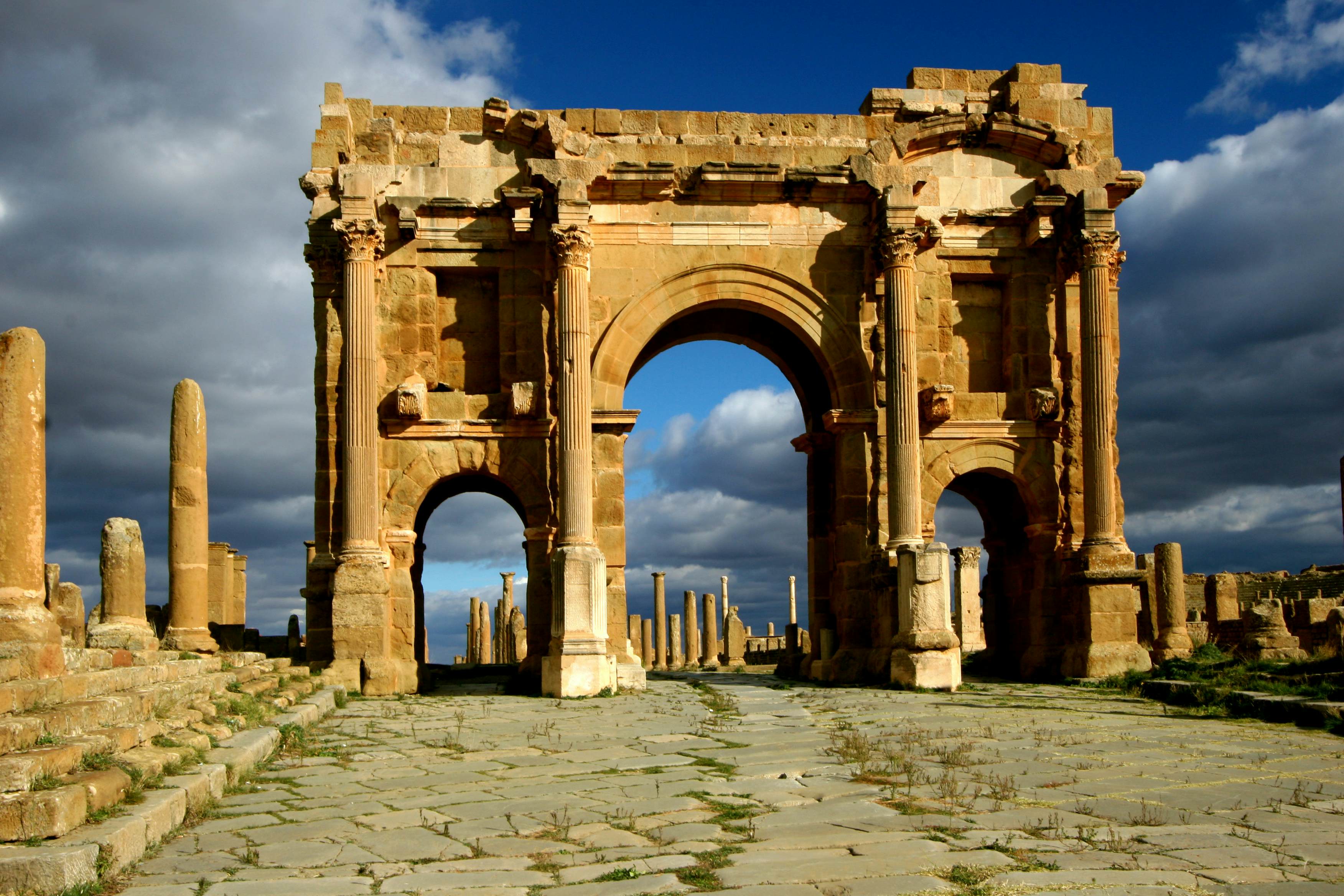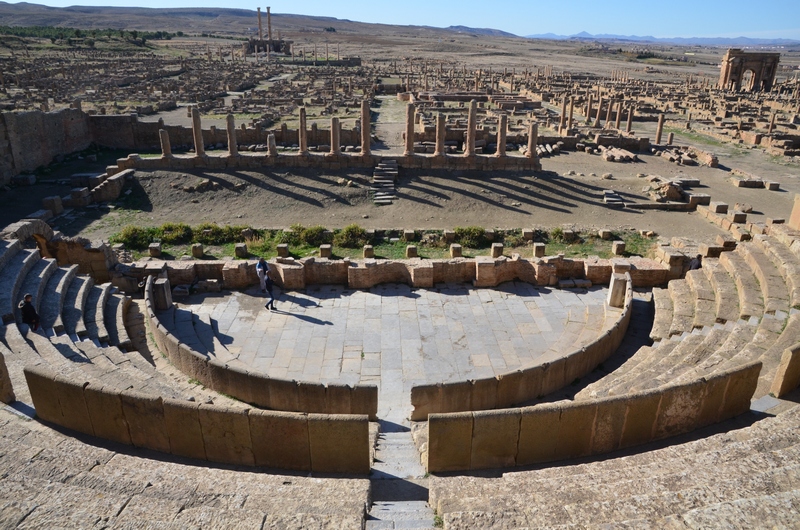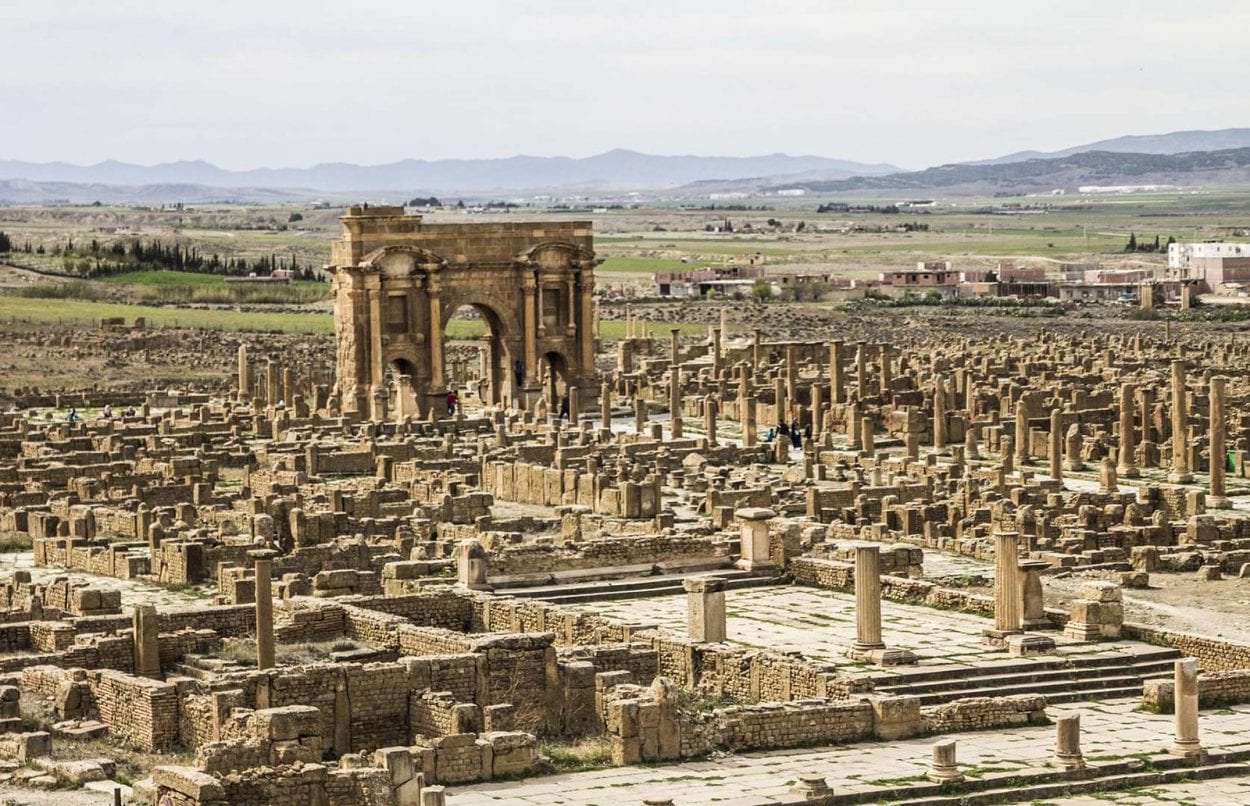Timgad, also known as Thamugadi, is a well-preserved Roman colonial town located in present-day Algeria. It was founded by the Emperor Trajan in AD 100 as a military colony for Roman veterans, and it was strategically positioned on the edge of the Sahara Desert to help secure the region's southern border. Timgad's location was also important for its access to the fertile plains of the Tell Atlas Mountains, which allowed the town to thrive agriculturally.
Timgad quickly became an important urban center in Roman North Africa, with a population estimated to have reached as high as 15,000 people. The town was well-designed with a grid pattern of streets and public buildings, including a forum, a basilica, and a theater that could seat up to 3,000 people. Timgad also had several public baths, a library, and a market, demonstrating its economic and cultural importance.Throughout its history, Timgad experienced periods of prosperity and decline. The town was sacked by the Berber King Firmus in AD 372, but was rebuilt by the Emperor Theodosius in the late 4th century. Timgad remained an important town in North Africa during the Vandal and Byzantine periods, but it began to decline after the Arab conquest in the 7th century. The town was eventually abandoned and forgotten until the 19th century, when French colonial authorities began excavating the site.The excavation and restoration of Timgad began in 1881 and continued for several decades. Many of the town's public buildings, including the theater, forum, and basilica, were reconstructed, revealing the impressive architectural achievements of Roman North Africa. Today, Timgad is a UNESCO World Heritage Site and a popular tourist destination, attracting visitors from around the world who come to admire its well-preserved ruins and learn about its rich history.
Timgad's significance lies not only in its impressive architectural achievements, but also in its role as a colonial town on the edge of the Roman Empire. The town's strategic location allowed it to control trade routes and secure the southern border of the Roman province of Africa, demonstrating the Roman Empire's military and political power in North Africa. Timgad also provides a unique window into the daily life of a Roman colonial town, revealing the town's social and economic structure, its cultural and religious practices, and its role as an important center of Roman North Africa.Timgad, also known as Thamugadi, was a Roman colonial town located in present-day Algeria, approximately 35 kilometers east of the city of Batna. The town was founded in the 1st century CE during the reign of Emperor Trajan and was designed as a military colony for Roman soldiers who had retired from service.The town of Timgad was built on a plateau overlooking a fertile plain, surrounded by mountains. The town was laid out on a grid plan, with two main streets, the cardo and the decumanus, intersecting at the center of the town. The streets were lined with columns and the town's buildings were constructed of local limestone.
Timgad was a thriving town during the Roman period, with a population of around 15,000 people. The town had all the amenities of a typical Roman settlement, including a theater, a temple, a basilica, public baths, and a forum. The town's prosperity was based on agriculture, with the surrounding plain providing ample opportunities for farming. In addition, Timgad was located on a major trade route, which brought goods and people from all over North Africa and the Mediterranean world.The town's most impressive structure is the Arch of Trajan, which stands at the center of the town where the cardo and decumanus intersect. The arch was built in honor of Emperor Trajan, who founded the town, and features a relief sculpture depicting scenes from Trajan's military campaigns in Dacia. The arch was one of the few structures in Timgad to survive the town's destruction in the 5th century CE.Despite its prosperity, Timgad was not immune to the political and economic turmoil that plagued the Roman Empire in the 3rd century CE. The town was sacked by Berber tribes in the mid-3rd century CE, but was quickly rebuilt by the Romans. Timgad suffered another setback in the mid-5th century CE, when the Vandals, a Germanic tribe, invaded North Africa and destroyed many of the Roman towns and cities. Timgad was abandoned shortly thereafter, and the town's buildings were gradually buried under sand and rubble.
In the 19th century, Timgad was rediscovered by European archaeologists who began excavating the town's ruins. Today, Timgad is a UNESCO World Heritage Site and a popular tourist destination. The town's well-preserved ruins provide a fascinating glimpse into the daily life of a Roman colonial town and the legacy of the Roman Empire in North Africa.








0 Comments